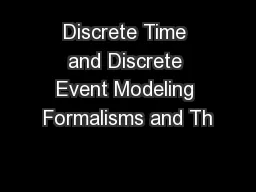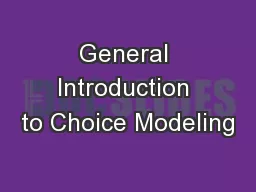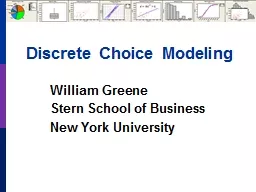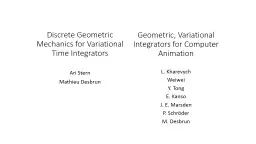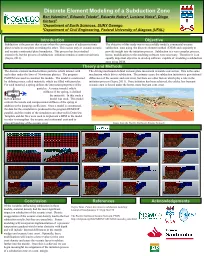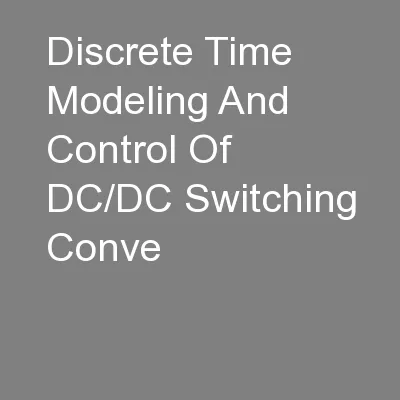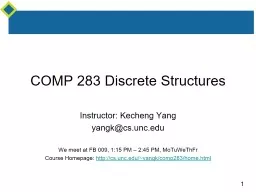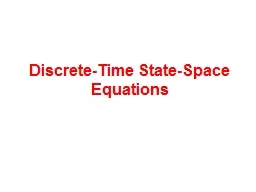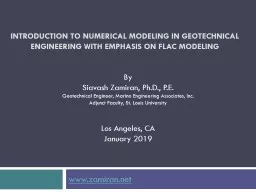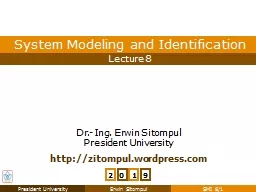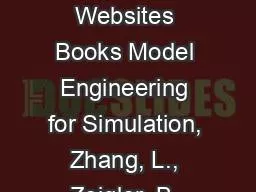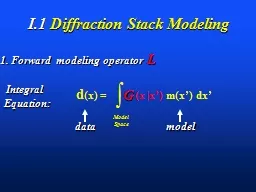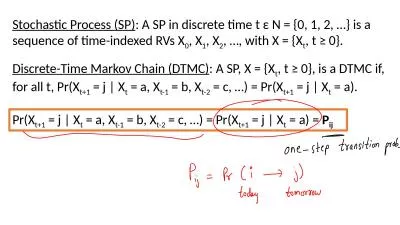PPT-Discrete Time and Discrete Event Modeling Formalisms and Th
Author : debby-jeon | Published Date : 2016-04-22
Dr Feng Gu Way to study a system Cited from Simulation Modeling amp Analysis 3e by Law and Kelton 2000 p 4 Figure 11 Model taxonomy Modeling formalisms and their
Presentation Embed Code
Download Presentation
Download Presentation The PPT/PDF document "Discrete Time and Discrete Event Modelin..." is the property of its rightful owner. Permission is granted to download and print the materials on this website for personal, non-commercial use only, and to display it on your personal computer provided you do not modify the materials and that you retain all copyright notices contained in the materials. By downloading content from our website, you accept the terms of this agreement.
Discrete Time and Discrete Event Modeling Formalisms and Th: Transcript
Download Rules Of Document
"Discrete Time and Discrete Event Modeling Formalisms and Th"The content belongs to its owner. You may download and print it for personal use, without modification, and keep all copyright notices. By downloading, you agree to these terms.
Related Documents

